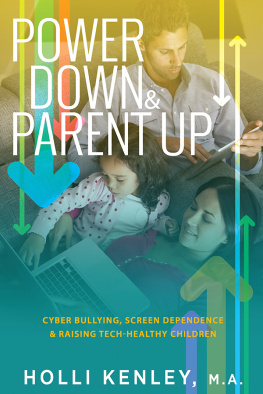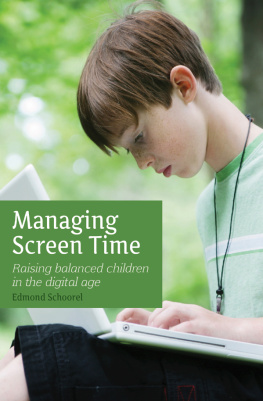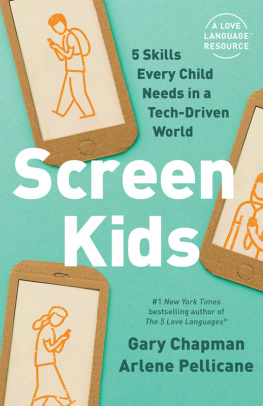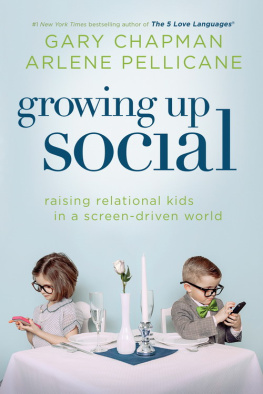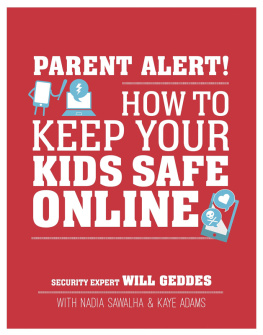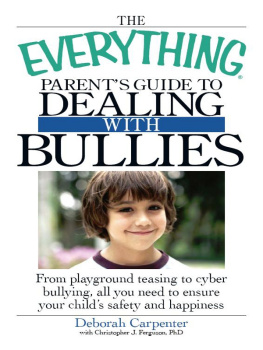Power Down & Parent Up!
Cyber Bullying, Screen Dependence & Raising Tech-Healthy Children
By Holli Kenley, M.A.,
Marriage & Family Therapist
Foreword by Laurie Zelinger, PhD and Fred Zelinger, PhD
Loving Healing Press
Ann Arbor
Power Down & Parent Up!: Cyber Bullying, Screen Dependence & Raising Tech-Healthy Children
Copyright 2017 by Holli Kenley. All Rights Reserved
Foreword by Laurie Zelinger, PhD and Fred Zelinger, PhD
Material for Part One originally published as Cyber Bullying No More: Parenting a High Tech Generation (2011)
ISBN 978-1-61599-350-5 paperback
ISBN 978-1-61599-351-2 eBook
Published by
Loving Healing Press
5145 Pontiac Trail
Ann Arbor, MI 48105
Tollfree 888-761-6268
Fax 734-663-6861
www.LHPress.com
Preface
We are fortunate to live in a time of technological advancement and wonder. Each day brings new discoveries and devices, enabling us to communicate and socialize with ease. However, as we embrace new technologies and their inherent benefits, we also must remain open to their possible consequences. For example, cyber bullying is not a cause of maladaptive social behavior. It is a behavioral consequence resulting from a complex, dynamic relationship between individuals and their electronic devices. In the past five years, our digital world has grown exponentially as has the degree of time both adults and children are spending on their screens. Not surprisingly, researchers are discovering a myriad of unhealthy manifestations associated with excessive screen time, especially for children.
In Power Down & Parent Up, our goals will be three-fold. First, parents/guardians, we will Power Down turning our full attention to cyber bullying. We will begin taking control of our childrens health by implementing a concise Parent Up approach in tackling cyber bullying, applying proven strategies for Protection, Intervention, and Prevention. Secondly, we will Power Down and tackle screen dependence, becoming focused and fully informed about growing health concerns and consequences. Thirdly, by embracing a program of Seven Proactive Practices and Four Healthy Guidelines, we will Parent Up as we continue to take control of our childrens health.
Part One: Lets Tackle Cyber Bullying
Foreword
Bullying is an issue occurring with increasing frequency and consequence within the lives of our children, a phenomenon witnessed regularly in our role as school psychologists, private practice therapists and as parents. Significant levels of attention are now being given within schools in an effort to stem the tide, empower victims, and deflate the aggressors. Many schools have made a commitment to eradicating this pattern of reprehensible behavior and have adopted formal programs to raise awareness by actively involving students and parents in reducing, reporting and preventing bullying. Schools deal with the face-to-face issues taking place during school hours, and at times, even those incidents reported outside of school when the effects spill over into the school day. However, issues arising through venues beyond school hours are often left to families to handle by themselves. How many parents are actually prepared to recognize and address bullying when it occurs through the Internet, texting or social media avenues that our children often conceal from prying parental eyes? It is especially concerning because, as Kenley cites, Many experts suggest that children do not report being violated online for fear of having their technology taken away or fear of retaliation. Likewise, Kenley teaches us that childrens technological level of savvy for their age far surpasses their ability to make sound judgments regarding potential risks of on-line communication.
We know that the exploding social network brought to us by the rapidly advancing technology supporting the Internet, has altered the very fabric of human communication and interaction. Geographical distances are no longer a roadblock to immediate contact, and millions of people can be accessed simultaneously and instantly. Face-to-face discussions are being replaced by pixels on a screen and visually deciphered symbols and words in the absence of facial expression, physical demeanor, or vocal inflexion. The sender can decide to be anonymous, or if clever, easily disguise herself as someone else. Like most change, the revolution in communication brought to us by millions of linked computers and phones, carries with it both amazing benefits, and frightening pitfalls. Kenley has provided us with a powerful, accurate, and concise description of the already prevalent concern known as cyber bullying, as well as a well thought out conceptualization of how parents can approach this expanding phenomenon.
In her no holds barred manual, Kenley has captured the incredible significance and power of cyber bullying, in a way that leaves the reader both shaken by its impact, and relieved by the steps offered to manage it. This pamphlet is not an expression of fear or worry; rather it is a brilliant effort to provide parents with the tools and concepts they need to both understand the potentials of internet communication, as well those needed to protect and assist their children in using technology effectively and safely. She makes her point quickly, thoroughly and accurately, leaving the reader to feel that he has the foundation to better understand, communicate and protect his child in a world with so many unknowns.
Laurie Zelinger, PhD, RPT-S and Fred Zelinger, PhD:
Licensed Psychologists
Introduction
There has been much in the news over the past several years about the dangers and abuses of online behaviors. Many of the harmful actions come from the classmates, friends, and peers of our children rather than from strangers or predators. Bullying, which has caused significant injury in the lives of countless victims throughout the years, has now become a relentless and horrifically destructive cyber force. As our children embrace a world that has been magically transformed by the wonders of technology, they also enter into an electronic culture void of human regard for one another; and tragically, they often find themselves navigating through a climate infused with revenge, retaliation and regret.
With one out of every five children having been the target of cyber bullying (Patchin & Hinduja, 2011), educators, psychologists, civil leaders and legal experts have been working tirelessly developing programs to combat it. In addition, professionals in a myriad of fields are developing strategies to intervene on behalf of the victims while searching for ways to hold the perpetrators accountable as well. However, every day, countless numbers of individuals fall prey to the abusive behaviors generated through social networking sites as well as other electronic means of communication. Sadly, as is often the case, parents/guardians who are struggling with the stressors and responsibilities of everyday life know little about the online bullying culture or aware of the importance of their role in parenting a high-tech generation.
Although there are dozens of books, videos, websites, and resources available for help in dealing with cyber bullying, the purposes of this article are to give parents/guardians a manageable number of principles and practices to incorporate into their daily lives. The parenting strategies will cover three areas of importance: Protection, Intervention, and Prevention.
Protection
Our children are growing up on a diet of technology with immediate access to worldwide social connections. Because it has become so common in our society for our children to have a cell phone, laptop, iPhone, or iPad, etc., we sometimes forget about the window of danger that is open to them. Parents would never hand over the car keys to their teens without the required number of education courses, behind-the-wheel practice hours, and supervision by an adult. And yet, we put a cell phone or a laptop in the hands of young children without adequate preparation, instruction or monitoring. We can begin protecting our high-tech children by implementing several safety measures into our parenting.
Next page
